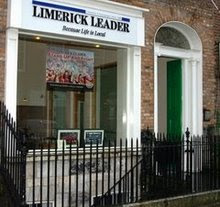In his address at the recent AGM of the Munster Branch, outgoing branch President Nicholas Comyn expressed his concerns over the fall-off in the numbers playing the game within the province.

Nicholas Comyn revealed that there had been a loss of players from the high 5,000 to around 3,000.
While part of the decline may be due to re-registrations, Nicholas Comyn explained that the major loss of players is at the 18–23 age group.
He continued: “I appreciate the strides being made by colleges this year to bring more players into the net by establishing themselves as a club and hopefully those players would be available to teams if their interest in rugby can be continued.
“The other area is of course the universities and whilst I understand the wish of universities to retain as many players as possible there is a middle ground where players who are not playing to their level should be encouraged to join clubs rather than drifting away from rugby. I hope this will be looked at in the future.
“The performance of the juniors was disappointing in the inter-provincials and maybe it is worth looking at the date on which the inter-provincials are played.
“There are not enough players coming forward to the Munster academy – there may be issues about academy players being available to clubs and I accept that not everybody is happy with the perceived policy but players of high achievement should be encouraged to join the academy or at least play at a good standard.”
The issue of falling numbers participating in rugby domestically is one new Branch President Declan Madden has already promised to address during his term.
Nicholas Comyn believes organising more sevens rugby as well as providing more opportunities with social and/or tag rugby as well as women’s rugby are some of the areas clubs should look at in hoping to reverse the fall-off in numbers playing the game.
“There are difficult times going ahead particularly for senior clubs in terms of the cost of travel, coaching, expenses, equipment etc,” Nicholas Comyn added.
“Last year I drew up a blueprint for an AIL Munster clubs committee, just as the junior clubs have a junior committee, and I believe this should happen rather than relying on the All Ireland Senior Club Rugby Association and if the new Bye-Laws come through then both junior clubs and the senior clubs will be represented properly on the domestic game board. There are other areas of rugby that clubs should consider such as sevens, formulating a women’s team, more social rugby and/or tag rugby. The whole area of domestic games in the future of rugby in Munster must be brought forward and to that end I salute and thank all the volunteers whom I have met throughout my year and before, who have been so heavily involved in clubs, committees, coaching, management, grounds. You are deeply appreciated by Munster rugby and the Munster Branch and we need to keep you involved.”
Taking inspiration from Tom Clifford
When Munster’s Paul O’Connell leads the Lions out in Saturday’s crucial second Test match against the Springboks in Pretoria, he might well take inspiration from the massive contribution his fellow Young Munster clubman Tom Clifford made on the 1950 tour to New Zealand and Australia. By 1949 Tom Clifford was an Irish regular, winning the Triple Crown and championship that year, and he got the Lions call for the following summer’s Lions tour, the first Limerick man ever to wear the red jersey.
Karl Mullen, who played with Clifford at international and Lions level, said : “Tom Clifford was the greatest. He had this quality that I find hard to define, a kind of inner toughness. He would never take any nonsense.”
Clifford played in 19 Lions matches on the 1950 tour, including five of six tests. On his return to Limerick, they had a marching band to welcome him home at Colbert Station. An estimated 8,000 people turned our to cheer.




0 comments:
Post a Comment